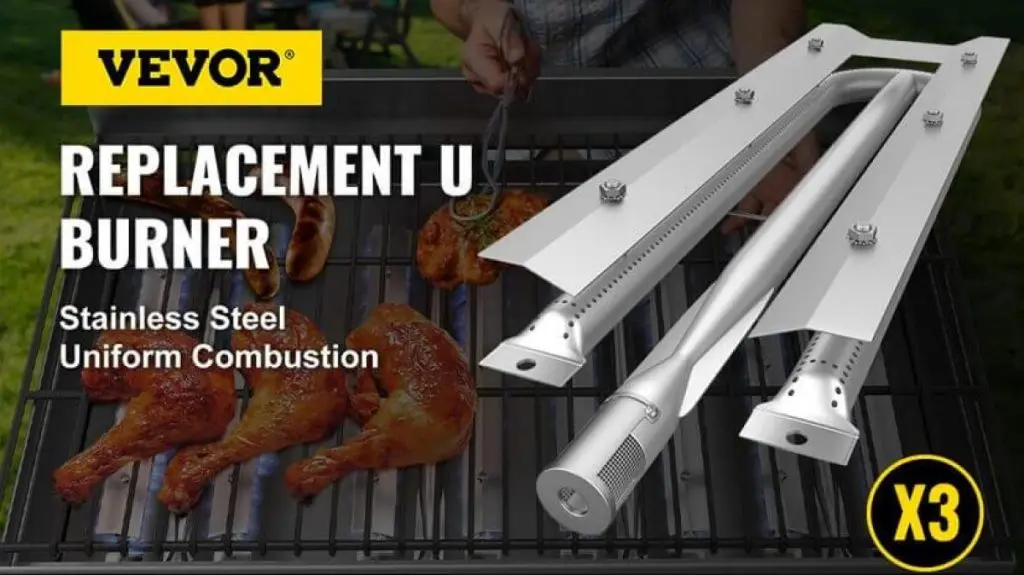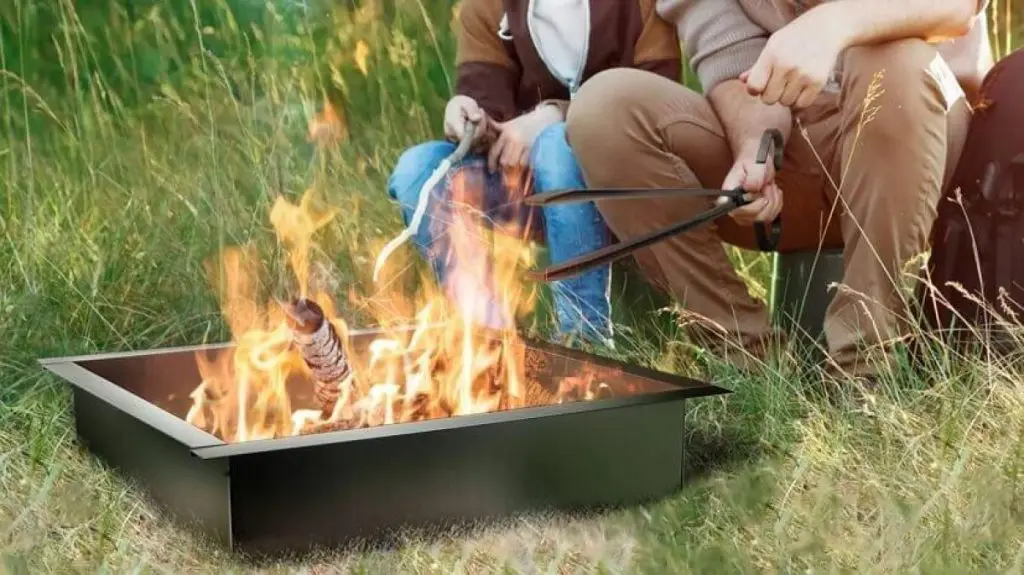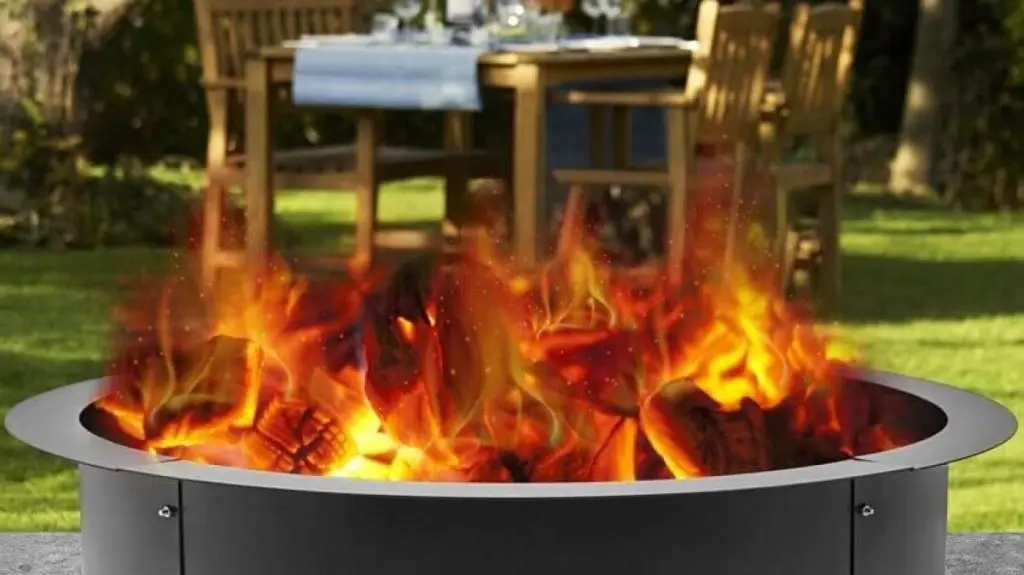Be it portable metal bowls or fixed masonry wells, timber or gas fire pits on wood decks and courtyards can add value to your evening sessions.
These gather-round structures come in various forms, sizes, shapes, and types. It only makes sense to compare your options before stepping out to buy. This article intends to differentiate between wood and gas fire pits to help you make an informed purchase decision.
The Basics of Fire Pit
Before beginning to compare wood and gas fire pits for their features, we must brush up on the basics of the two heating elements.
What is a Wood Fire Pit?
- Fuel Source: A traditional wood-burning fire pit burns on a stack of seasoned firewood logs.
- Operational Process: A wood fire pit requires you to stack the timber in a pyramid before igniting it. To adjust and regulate the flame, you will have to keep stacking the logs into the fire.
- Designs: These fire pits offer various sizes and multiple designs, from fire rings and bowls to stone and concrete fire pits.
What is a Gas Fire Pit?
- Fuel Source: Fuel is the basic factor that differentiates gas fire pits from their wood-fuel counterparts, as they ignite on propane or natural gas.
- Operational Process: These heating elements require a push-button ignition to turn on and a knob to control the temperature, ensuring ease of operation for the users.
- Designs: While wood fire pits are more rustic, gas heaters are sleeker and an excellent choice for a contemporary house exterior.
Pros and Cons: A Comparative Analysis
Fire pits have the potential to become the most appealing feature of your outdoor lounge. However, choosing an ideal one calls for some serious consideration and comparisons.
In this section, we will compare wood and gas fire pits based on their specifications to help you make a more informed purchase decision.
Advantages of Wood Fire Pits
Here are some pros to a rustic and cozy wood-burning experience:
- Authentic Campfire Experience: Building a wood-burning fire pit can be a DIY project that you can take with your friends or family. The results of your tireless hard work will be an aesthetic yet cozy outdoor seating space. Moreover, the crackling sound of burning timber and smoky aroma will deliver a true campsite experience.
- Cooking Food: One of the good things about wood-burning fire pits is the ability to produce small to large fires by adding or removing wood. You can add a cooking grill and use the embers for BBQ and heating marshmallows.
Disadvantages of Wood Fire Pits
Here are some potential factors to consider before getting a wood-burning fire pit.
- Smoke and Ashes: Another con of using a wood-burning fire pit for your outdoor seating is the smoke it produces. The smoke can be bothersome to many, as it can irritate eyes, throat, and nose and even trigger allergies. Moreover, once the wood burns down, ashes and embers remain, which can build up and cause fire hazards.
- High-maintenance: A wood-burning fire pit can have a visual appeal but requires careful construction and high maintenance. It needs thorough cleanup and service every now and then to avoid any potential harm. Moreover, you will have to store and season firewood in order to ignite the fire.
Advantages of Gas Fire Pits
Here’s why we think propane fire pits are a safe choice for your outdoor lounge:
- Easy to Ignite and Control: Gas fire pits require a push of a button or flip of a switch, making them convenient to turn on compared to their wood-burning counterparts. Moreover, they generate continuous heat and maintain consistent temperatures you don’t have to regulate manually.
- Clean Burning: Gas fire pits, especially the ones that use propane as a fuel, ensure clean combustion and maximum heat generation. They produce little to no smoke and leave no ashes or embers that can cause fire risks.
Disadvantages of Gas Fire Pits
- Dependency on Fuel Source: You’ll need to store gas tanks and a gas line from the tank to the fire pit for a steady supply of fuel. When the fire is dependent on the fuel supply, it becomes necessary to keep a close eye on the levels and top up periodically.
- Lack of Authentic Fire Experience: Propane and natural gas heaters provide excellent warmth and create cozy space, but they might not deliver as authentic a campfire experience as wood-burning fire pits.
Wood and Gas Fire Pits Cost Implications
When choosing between a wood or gas fire pit, the initial setup cost is a significant factor to consider.
The cost depends on the material used and the features the fire pit contains. Installation for wood fire pits can cost between $500 to $1300, but for gas fire pits, it costs around $400 to $3000. Generally, gas fire pits have a higher setup cost and require a trained professional for installation.
The second major expense associated with fire pits, after installation, is the cost of maintenance and fuel prices.
Although wood is somewhat cheaper, it requires ample space for storage and protection from termites and harsh weather conditions, which makes maintenance costs run higher. On the contrary, gas fire pits require less maintenance as the durability of parts is greater and doesn’t require frequent upgrades. The fuel price of gas/propane keeps fluctuating, but it’s never too high.
Environmental Impact: Which is Greener?
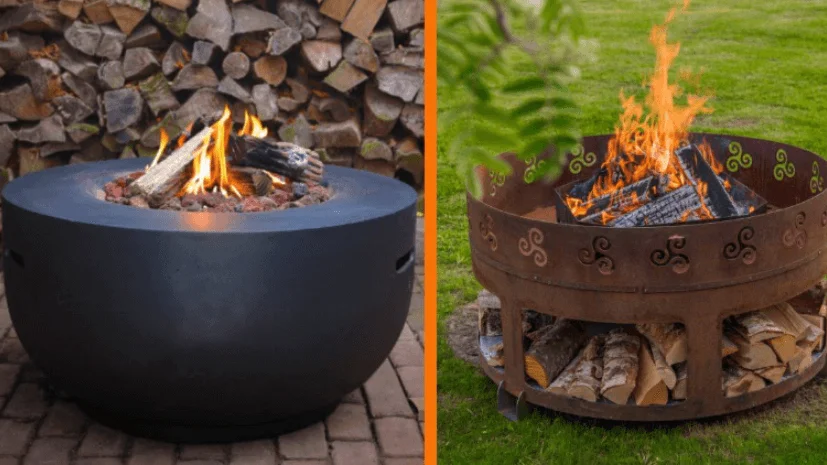
Gas fire pits are a much greener option compared to wood fire pits. The lack of smoke produced makes it highly energy efficient.
Propane fire pits are safe to use and a great choice for outdoor heating because they provide an eco-friendly alternative to traditional wood-burning fire pits. Unlike wood-burning fire pits, which produce large amounts of carbon footprints and air pollutants, propane fire pits release fewer harmful chemicals and pollutants into the air.
Wood Fire Pits require the use of wood to operate, which means that you must cut down trees to produce firewood. This practice contributes to global warming, as trees are important in maintaining the balance of the greenhouse effect.
Ease of Use and Maintenance
A gas fire pit turns on conveniently with a push button ignition and provides consistent heat, whereas its wooden counterpart takes a lot of hassle to ignite and regulate the flame. Likewise, there is a considerable difference in the effort required to maintain them.
The Effort to Maintain Wood Fire Pits
Maintaining wood fire pits can be quite challenging as it requires extra effort to store and protect the wood from moisture and dampness, as wet wood doesn’t burn as efficiently.
Additionally, wood fire pits tend to accumulate ash and logs that need to be cleaned periodically. Failure to clean wood fire pits regularly can also lead to fire hazards if embers are not completely extinguished.
In short, spending a lot of time cleaning and gathering wood is something to look for when opting for wood fire pits.
Maintenance of Gas Fire Pits
Unlike the wood fire pits, gas fire pits are much easier to maintain and clean. They do not require burning wood or other materials.
You only need to clean the outer area of the gas grill. Moreover, it is essential to keep a check on vents and ducts to prevent debris buildup that can lead to a malfunction.
Aesthetics and Ambiance: Setting the Mood
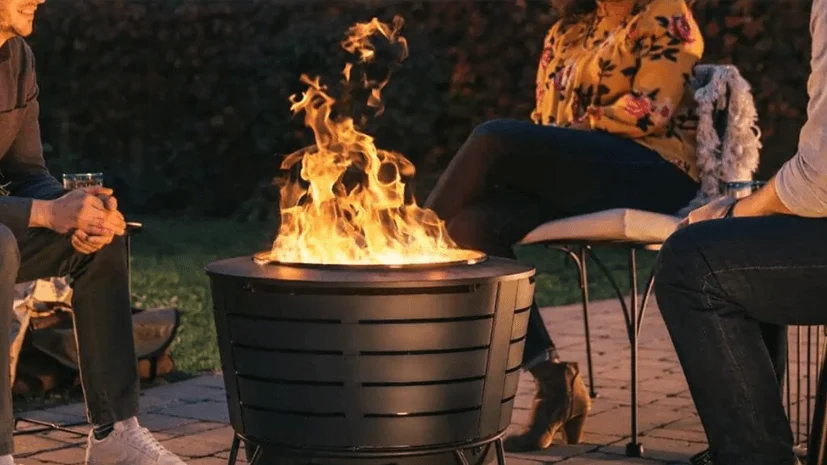
Both fire pits can create a cozy atmosphere and add a touch of beauty to your indoor or outdoor space.
Wood fire pits have a charming and rustic appeal that looks very natural and can give your entire setup an earthy feel. They are ideal for providing both warmth and beauty to your surroundings.
Gas fire pits provide a contemporary touch to your home decor. Modern designs can come in various shapes, such as squares, rectangles, and bowl-shaped fire pits. The materials used to construct gas fire pits are lightweight, elegant, and sleek-looking. They also come with customizable flame patterns that enhance the beauty of both indoor and outdoor surroundings.
Conclusion
It is hard to say which one is better among wood and gas fire pits. While many people love the idea of wood-burning fireplaces, some people prefer gas fire pits for their ease of maintenance and efficiency.
VEVOR offers long-lasting and heavy-duty fire pits of various sizes at affordable prices. Our website has the necessary gear even if you are a DIY enthusiast and want to build your own fire pit.
FAQs about Wood and Gas Fire Pits
Can I convert my wood fire pit to gas?
Yes, you can convert your wood fire pit to gas. You need to select the fuel type, type of ignition system, fire kit, and type of shape the burner will have. Lastly, a proper ventilation setup and the connections for your burner and gas supply with a key valve are required.
How long do gas fire pits last compared to wood ones?
Generally, gas fire pits are more reliable and keep you warm for longer periods if maintained properly. The duration of the fire depends on the cylinder size and burner condition.
Are there hybrid fire pits that use both wood and gas?
No, hybrid fire pits that use both wood and gas do not exist yet. Fire pits are not built to manage the extreme heat produced by wood, and their construction is not designed to support wood combustion and gas utilization at the same time.


